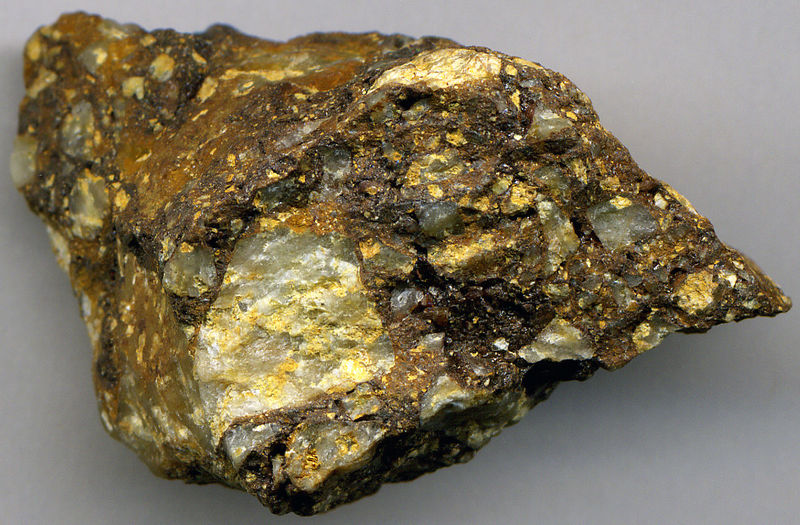
|
This image was uploaded to the shared "Image Pool" and is usable on any CreationWiki site.
Please go to the Pool to edit its description.
|
Summary
James St. John
Uploaded on March 12, 2015
James St. John Follow
Breccia
Sedimentary rocks form by the solidification of loose sediments. Loose sediments become hard rocks by the processes of deposition, burial, compaction, dewatering, and cementation.
There are three categories of sedimentary rocks:
1) Siliciclastic sedimentary rocks form by the solidification of sediments produced by weathering & erosion of any previously existing rocks.
2) Biogenic sedimentary rocks form by the solidification of sediments that were once-living organisms (plants, animals, micro-organisms).
3) Chemical sedimentary rocks form by the solidification of sediments formed by inorganic chemical reactions. Most sedimentary rocks have a clastic texture, but some are crystalline.
Breccia is an uncommon, coarse-grained, siliciclastic sedimentary rock. Breccias form in many ways (sedimentary breccias, volcanic breccias, tectonic breccias/fault breccias, collapse breccias, boiling breccias, hydrothermal breccias, xenolith breccias, seismite breccias, injectite breccias, etc.), but they all have the same general appearance. Sedimentary breccias contain a mix of large & small grains. The large grains (gravel - pebbles or cobbles or boulders) are angular to subangular in shape, and they are surrounded by a finer-grained matrix, usually sand or mud.
Copyright status:
https://creativecommons.org/licenses/by/2.0/
Source:
https://creativecommons.org/licenses/by/2.0/
File history
Click on a date/time to view the file as it appeared at that time.
| Date/Time | Thumbnail | Dimensions | User | Comment |
|---|
| current | 03:52, 26 November 2018 |  | 947 × 621 (531 KB) | Tubal.Theodros | James St. John Uploaded on March 12, 2015 James St. John Follow Breccia Sedimentary rocks form by the solidification of loose sediments. Loose sediments become hard rocks by the processes of deposition, burial, compaction, dewatering, and cementation.... |
File usage
The following page uses this file:
This file contains additional information, probably added from the digital camera or scanner used to create or digitize it.
If the file has been modified from its original state, some details may not fully reflect the modified file.

